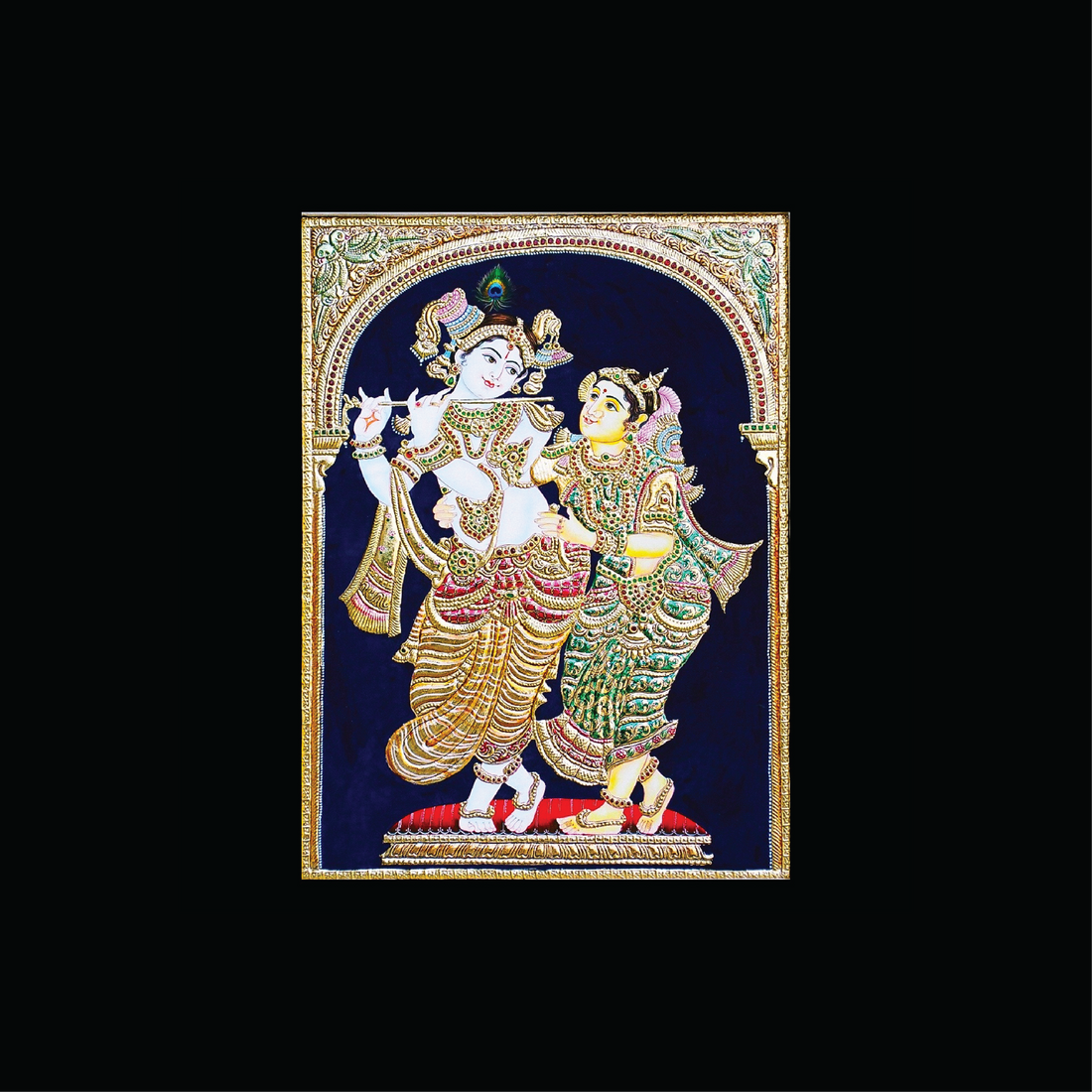Tanjore paintings, also known as Thanjavur paintings, are a traditional art form that originated in the town of Thanjavur (Tanjore) in the southern state of Tamil Nadu, India. These intricate and vibrant artworks have captured the imagination of art enthusiasts for centuries. Combining elements of painting, sculpture, and rich cultural symbolism, Tanjore paintings hold a special place in India's artistic legacy.

Origins and Historical Context -Tanjore paintings trace their roots back to the 16th century during the reign of the Nayak dynasty. These artworks were initially created to adorn the walls of temples and serve as a visual representation of Hindu deities and religious narratives. Over time, the art form expanded beyond temple settings and found its way into the homes of royalty and aristocrats, gaining popularity as a cherished form of religious and decorative art.
Artistic Techniques and Characteristics - Tanjore paintings are characterized by their distinctive features that set them apart from other traditional Indian art forms. The process begins with a wooden base, typically made of jackfruit or teak, which is coated with a layer of cloth or paper to prevent warping. The surface is then covered with a mixture of chalk powder and a binding agent, creating a smooth and durable canvas. The use of vibrant colours is another hallmark of Tanjore paintings. Artists employ a rich palette of hues, including vivid shades of gold leaf, semi-precious stones, and bold pigments, to add a luminous and opulent touch to the artworks.
Iconography and Symbolism - The central theme of Tanjore paintings revolves around Hindu gods and goddesses, especially Lord Krishna, Lord Rama, Goddess Lakshmi, and various manifestations of the divine. These deities are depicted with great attention to detail, adorned with intricate jewellery, elaborate crowns, and finely embroidered garments. The backgrounds often feature ornate architectural elements, lush landscapes, and scenes from Hindu mythology.
Symbolism plays a significant role in Tanjore paintings. Every element within the artwork carries a deeper meaning, often representing philosophical and spiritual concepts, invoking blessings, and symbolizing auspiciousness and prosperity.
Preservation and Evolution- Throughout the centuries, Tanjore paintings have faced challenges due to changing artistic trends and economic factors. However, passionate artists and connoisseurs have consistently worked to preserve and revitalize this traditional art form. Today, Tanjore paintings continue to be created, albeit with some modern adaptations to cater to contemporary tastes while staying true to their traditional essence.
Cultural Significance and Global Appreciation - Tanjore paintings are not only a testament to India's rich cultural heritage but also a reflection of the country's deep spiritual and artistic traditions. They have garnered appreciation beyond India's borders and are admired by art enthusiasts worldwide for their uniqueness and aesthetic appeal.
Tanjore paintings stand as a shining example of India's artistic prowess, combining intricate craftsmanship with profound religious symbolism. They have withstood the test of time, carrying forward the legacy of centuries-old traditions and reflecting the spiritual devotion and cultural richness of the Indian subcontinent. As these exquisite artworks continue to captivate hearts and minds, they remain an enduring symbol of India's artistic heritage.

